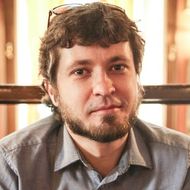How to Mitigate the Influence of Retail Investors on the Stock Market

Pasha Andreyanov, Assistant Professor in the Department of Theoretical Economics at HSE University and Tomasz Sadzik, Assistant Professor of Economics at University of California, have described a mechanism that allows the stock market to remain relatively calm despite the growing influence of retail investors. Their joint article, 'Robust Mechanism Design of Exchange', was published in the Review of Economic Studies, one of the top 5 academic journals in economics and finance.
The growing influence of retail investors on the stock market is a global trend. According to the latest ‘Financial Stability Review' released by the Central Bank of Russia, in the first nine months of 2020, the increase in investments made by individuals in shares and bonds was greater than the increase in bank deposits made by citizens. This change in household financial behaviour is natural in conditions of declining interest rates, and it can become a driver of securities market development. However, the Central Bank points to potential associated risks. After all, on the one hand, the state of the stock market may significantly affect the welfare of people, and on the other hand, the participation of retail investors may increase the stock market’s volatility.
Is it possible to reduce these risks?
The mechanism proposed by Pasha Andreyanov and Tomasz Sadzik is based on an auction format first proposed by Nobel laureate Eric Maskin, where a trader submits a bid that automatically correlates with an opponent's bid. For example, the trader tells the shareholder that he is willing to pay $100,000 for a lot plus 5% of the amount offered by a competitor. A similar effect can be achieved with an open auction format (where a player looks at opponent’s bid and adjusts his own), but economists were interested in a format in which a player announces in advance exactly how he is willing to adjust his base bid if a certain other player shows interest in the same lot.
‘Maskin's original article talks about a simple model in which there were only two players in the auction, and it has a good solution. And for a situation where there are many players, there was no solution, so we came up with one,’ says Pasha Andreyanov.
How can an abstract mathematical solution be applied to real life? If we look at the stock market, we see a large number of players including several big ones, such as the Central Bank and the pension fund. These institutional players are influential: they usually have some valuable information and they usually transact anonymously, so as not to create market fever by their actions. Individuals would like to base their actions on the deep expertise of institutional players, but they do not have access to it. Under the terms of the economists' challenge, the big players were de-anonymized, allowing retail investors to target them in their transactions.

Pasha Andeyanov, Assistant Professor at the Department of Theoretical Economics
In movies or on the news, we often see a trader sitting in front of 4-5 monitors. Why is this? One explanation is that it is impossible to tell from the price movement in a single market whether it is the result of the actions of many informed players, or of one big player, or, in general, of "noise". Moreover, if, for example, a big bank wants to make deals, the trader would like to be able to rely on its expertise and react to its actions – to buy or sell.
The market is feverish, and for a person who has invested all his savings in it, losses can be substantial. Nervousness of many small players can lead to even greater market volatility. A mechanism that allows an individual to decide to buy or sell securities and call a price correlated with the actions of an institutional player (or an impersonal stock index, for example) could serve to stabilize market sentiment.
‘Imagine an average person trading on an exchange according to some simple algorithm. As a rule, the actions of big players are a signal for uninformed players that they should have bought or sold at the old price, but the moment has already passed. In an auction where correlated bids are allowed, the algorithm will conduct the transaction simultaneously with the big player. No doubt this will make life difficult for the big players. However, many economists believe that the interests of the small players are more important, because correlated rates smooth out price movements and assuage the market,’ Andreyanov says.
If the market has an unlimited number of players and each of them will create a function that will depend on the actions of another players, there may be no geometric intersection in the space of all their demands. But in a system where there are a lot of small players (individuals) and 2-3 large institutional players (which is how the stock markets in both America and Russia are arranged), it is possible to find an equilibrium.
The auction described in the article is formally a generalization of the second-price auction, when the winner pays not his bid, but the bid called by his closest competitor. In practice, the second-price auction is not popular. However, economists still resort to second-price auction models because the mathematical results and operational solutions derived from them work similarly for the most common first-price auction.
A correlated rate mechanism could have several positive effects. For example, it could encourage individual players to invest in riskier tools. At the same time, the losses of institutional players are offset by the fact that their activity as state agents serves to stabilize the market.
Pasha Andreyanov
Assistant Professor, Department of Theoretical Economics
Eric S. Maskin
Chief Research Fellow, International Centre of Decision Choice and Analysis
See also:
Economists Suggest Using Media's Attention to Bitcoin to Predict its Returns
Researchers at the HSE Faculty of Economic Sciences have studied the relationship between the changes in the bitcoin prices and the media attention to this cryptocurrency. The researchers examined the mentions of bitcoin in the media between 2017 and 2021 and built a mathematical model that revealed the strong relationship between media attention and bitcoin prices. The study was published in the Applied Stochastic Models in Business and Industry journal.
HSE Economists Develop a Model for Sustainable Solar Geoengineering Agreements
Researchers at HSE University and George Mason University have investigated the sustainability of prospective international agreements on solar geoengineering. The authors have proposed a scheme in which payments flow from affluent nations to less wealthy ones; an arrangement which sets their proposal apart from traditional systems. The proposed model aims to dissuade more vulnerable countries from excessive use of the prevalent geoengineering method by providing compensation for the potential damage they may incur and supporting their adaptation to climate change. The paper has been published in Environmental and Resource Economics.
Crypto Investors Receive Downside Risk Premiums
Victoria Dobrynskaya, Assistant Professor at the HSE Faculty of Economic Sciences, has analysed the price dynamics of 2,000 cryptocurrencies from 2014 to 2021 and investigated the association between downside risks and average returns in the cryptocurrency market. As it turns out, cryptocurrencies exhibiting a greater risk tend to yield higher average returns. The study has been published in International Review of Financial Analysis.
Results of the Contest to Predict Nobel Prize Winners in Economics
Claudia Goldin's award was predicted by five people. They are Olga Peresypkina (RSVPU), Anastasia Sirotina (first-year student of the Bachelor's in Applied Mathematics and Information Science at HSE University), Mikhail Shabanov (Global Vision Asset Management LLC), Tatul Hayrapetyan (PhD student at the Stanford Graduate School of Business), and Hemant Kumar (Ettumanoorappan College, Kerala, India).
Financial Sector Risks Can Hinder Transition to Green Economy
According to HSE and MGIMO economists, increased financial sector risks in developed countries may be associated with a higher carbon footprint in banks' loan portfolios. This is likely due to the fact that in response to an unstable economic situation, banks tend to issue more loans to companies that have a detrimental impact on the environment. Although this might yield short-term profits for the banks, such trends hinder humanity's progress towards achieving a green economy. The paper has been published in Environmental Science and Pollution Research.
Winner of 2023 Nobel Prize in Economics Announced
The Royal Swedish Academy of Sciences has awarded the Sveriges Riksbank Prize in Economic Sciences in Memory of Alfred Nobel 2023 to Claudia Goldin (Harvard University, Cambridge, MA, USA), ‘for having advanced our understanding of women’s labour market outcomes.’ According to the Nobel committee, Professor Goldin has uncovered key factors that determine gender differences in the labour market.
Millennials Are Three Times Ahead of Zoomers in the Monetised Creator Economy. Even Boomers Outperform Them. Okay Then…
A group of specialists from the HSE Institute for Cultural Studies, Vitaly Kurennoy, Alexander Suvalko and Maria Figura, have determined two main trends that are actively shaping the image of the creative economy and culture in 2021-2023: the creator economy and the maker economy.
Teaching Masters' Students and Conducting Lectures in English Boost Academic Productivity
HSE researchers have analysed teaching load data at the HSE campus in St Petersburg to investigate the potential impact of teaching on faculty research output. They found that factors such as teaching primarily masters' courses, conducting 20% of lectures in English, and supervising only one doctoral student per year were associated with a greater likelihood of producing more high-quality academic papers. The study has been published in Higher Education Quarterly.
'HSE Paved My Road to Harvard'
Nargiz Mammadova, from Azerbaijan, is a 2022 graduate of the Economics: Research Programme and a finalist of the Global Essay Competition in St. Gallen. As she prepares to start her Master of Public Administration in International Development programme at Harvard in August 2023, Nargiz reflects on her time studying at HSE University during the COVID-19 pandemic, talks about her work for the State Oil Fund of Azerbaijan, and shares an important message for future students.
Income and Cost of Living Distribution Found to Be Similar in Russia and US
Researchers at the HSE Faculty of Economic Sciences Laboratory for Wealth Measurement analysed income and cost of living data at the sub-regional level in Russia (municipalities) and in the US (counties). The study reveals that territorial differences in the cost of living are more pronounced in Russia compared to the United States. However, the distribution of overall income across settlements of varying sizes is quite comparable in both countries. The article has been published in the HSE Economic Journal.


